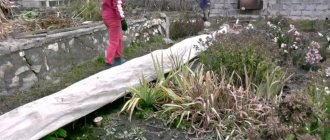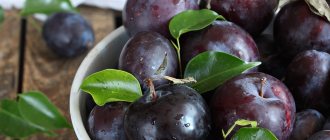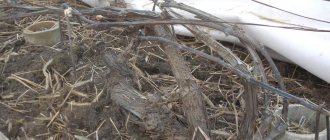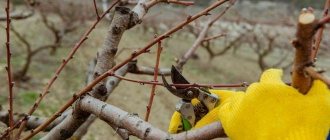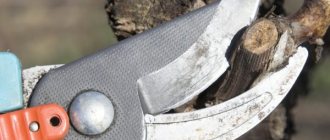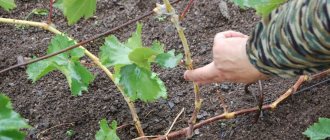Industrial and amateur viticulture in Russia has moved far beyond the subtropical climate. In all regions, except for the Krasnodar Territory and the Republic of Crimea, a covering system for growing grapes for both table and technical (wine) purposes is used. Cover crop, by definition, involves more severe pruning of bushes before covering them. In addition, during the process of covering and opening, breakage and damage to the vine are inevitable. How to properly prune grapes for the winter is a question of particular importance in cover crops, since the result of overwintering the grapes and, ultimately, what kind of harvest will be obtained depends on proper pruning.
Pruning grapes is a necessary and regular procedure
Why do you need to prune grapes in autumn?
It is important to remember that only those grape varieties that are going to be covered for the winter are pruned in the fall. Otherwise, you should not prune the bushes - this may impair the frost resistance of the plants.
To understand why pruning is done in the autumn, you need to know for what purpose this plant is pruned in general. The very first reason for which this event is carried out is, of course, the removal of excessive thickening of the bush, which makes it easier to care for (shelter for the winter).
The plant hardens and becomes more resistant to diseases and pests. In the future, the consequence of timely pruning of bushes is an improvement in the quality of the berries: their taste, size and sugar accumulation improve. Accordingly, the clusters become longer and larger. The ripening of berries in busy and overgrown bushes is protracted.
Winter protection of mature vines
The technology for covering bushes older than 4-5 years is different:
- remove the grapes from the supports and lay the vines on the ground;
- cover the top of the crop with spruce branches;
- place arcs over the grapes at a distance of 70 cm from each other;
- stretch polyethylene or non-woven material over them, and press down its edges with earth, bricks or stones;
- If you stretched film over the arcs, then leave the entrance and exit from the tunnel open so that the bushes are ventilated, hardened and their immature shoots ripen. Close the ventilation openings only if the temperature drops below -15°C.
When growing cold-resistant varieties (Amethyst, Yubileiny, Timur), and even if winter spoils you with snowfalls and not too low temperatures, there is no need to cover the grapes.
Cheat sheet for a beginner
In the fall, pruning of the grapevine begins only after all the foliage has fallen off naturally. This happens at different times in different regions. The pruning itself is carried out in two stages (this is especially true for those bushes that were previously poorly rooted or whose wood has not yet matured).
The first stage is preliminary
It is carried out in advance, before the main pruning of the grapes for the winter. The reference point for starting preparations for autumn pruning is bare shoots on the grape vine. As soon as the leaves have fallen, the temperature outside is still above zero and there are no frosts at night, you can cut off all the thin shoots on the grapes, as well as the green parts of the immature vine and the tops.
Advice! After this stage, it is best to immediately carry out preventive treatment of the bushes and soil under the vineyard with a solution of iron sulfate.
The second stage is the main one.
You should start autumn pruning of grapes no earlier than two to three weeks after the first stage, but preferably before the expected onset of stable sub-zero temperatures at night. This event is held on a fine day with above-zero air temperatures. After this pruning stage is completed, the vines are laid and pinned to the ground for further shelter for the winter. The covering of the bushes itself is carried out after the onset of consistently low night temperatures of -3-5 degrees.
Interesting! The timing of autumn pruning of grapes does not depend on the region of cultivation of the vine; they depend on the weather conditions and temperatures established in the growing area in the autumn.
Which grapes do not need to be covered for the winter?
As a rule, most technical and some universal grape varieties do not require insulation and winter well without special shelter. The buds are not damaged and the vine is preserved when the temperature drops to - 20 °C for Isabella, Lydia, Concord, Race, etc. Industrial grapes are less sensitive to frost and have increased immunity compared to dessert hybrids.
Everyone's favorite frost-resistant hybrids Vostorg, Krasa Severa, Nadezhda Azos, Dekabrsky, Kasparovsky, as well as varieties of dessert Muscat (Moscow, Transportable and others) are stored until spring without the use of insulation. But this wintering option is suitable for the southern and central regions of Russia, for Ukraine. In the north - in Khabarovsk, Kemerovo, Krasnoyarsk, and the Urals, dessert grapes will give a bountiful harvest if all the buds and shoots are preserved. To do this, it is recommended to carefully cover young shoots and woody vines, making sure that there are always “breaths” for ventilation.
Types of grapevine pruning
In total, three types of pruning are typical for a vineyard and they replace each other throughout the life of the vine. And to answer the question of how to properly prune grape bushes for the winter, you must first decide on the age of the bushes. It is on this that the type of pruning that should be carried out at the moment depends.
The first type is formative pruning. It is carried out at 1-3 years of plant life. The meaning of its implementation, as the name implies, is to form the shape of the future adult plant. By removing all weak and extra shoots from the plant, the winegrower helps to better develop the root system and build growth force for the young bush.
The second type of pruning is annual, which is designed to preserve the plant’s potential for many years. It is done to all formed grape bushes over four years old.
And the third type of pruning is bush rejuvenation. That is, the removal of very old sleeves. This pruning is carried out on mature bushes whose wood is becoming rotten or whose sleeves are moving too far away from the head of the bush, which disrupts the planned formation of the plant.
Shelter dates
Viticulture is practiced almost throughout Europe, in the Urals, Siberia, and the Far East. Gardeners from Ukraine and Belarus have extensive experience in growing grapes.
In the Urals, grapes are grown in the southern regions of the region. Air temperatures drop to -7 °C in these places by the end of October. Already in early November, winegrowers begin preparing the vines for shelter
In central Russia, frosts arrive by the 15th of October; already by the 20th of October you can begin to lay grapevines in pre-dug trenches.
In the Moscow region, frosts can come as early as early October, and frosts can persist for a long time, so the grapes are laid immediately after the daytime air temperature drops to 0°C.
In Siberia, frosts come early, immediately and for a long time. The grapes are buried in trenches with the arrival of autumn.
In the Volga region, temperatures can range from -15 to -40°C. Winters near Astrakhan are very different from winter weather in Kazan. Sheltering of grapes is carried out in accordance with long-term observations of average annual winter observations.
In the territories of Ukraine and Belarus, stable cold comes at the end of November, but much depends on the changeable Atlantic masses, which can bring warmth even in December. Therefore, gardeners cover grapes in both November and December.
How to plant strawberries with mustaches in the fall
List of necessary tools and materials
The most common and effective when working in a vineyard is the usual set of equipment:
- Secateurs, which are necessary, especially in the first years of plant life. It easily cuts thin rods, leaving the most even wound surface.
- Hacksaw or reinforced pruning shears. Used for rejuvenating pruning of aged vines.
- Secateurs with two cutting blades. It is used by professionals to obtain even cuts on sleeves with a diameter of 2.0-2.5 centimeters on not old vines.
- Hacksaw, bow saw for wood. It is used for pruning old grape vines, the trunk thickness of which is 6-10 centimeters.
Protection from pests and diseases
Winter hibernation of the vineyard must be guaranteed by complete protection from a large number of harmful soil inhabitants. Therefore, it is worth initially visually inspecting the branches and leaves of the plant. Mildew coverage is considered a dangerous attack on these parts of the bushes. The disease is common and occurs more often than other diseases among vineyards. If treatment is not done carefully in the spring, the disease begins to actively develop and fill other plant areas. If there are signs of mildew infection, diseased leaves and shoots must be removed. After cleaning the branches, it is necessary to treat the vineyard with the following chemicals:
- fungicide Amistar Extra;
- fungicide Strobi;
- preventive combination drug Kuproxat;
- Efal;
- Penncozeb.
No less dangerous is the disease oidium. Prevention of such powdery mildew is provided by exposure to products containing sulfur. The following sulfur preparations are popular:
- Abiga-pik;
- Fundazol;
- Thiovit jet;
- Vectra;
- Rubigan.
Identical agents are used as prophylaxis and elimination of signs of Phomopsis and anthracnose. Fundazol or Polychom is indicated for the prevention of cercospora. The dangerous pest of the bunch moth can be eliminated with the help of infusions of tobacco or chamomile. It is easier to buy the ready-made drug Rovikurt. Each treatment is carried out in calm weather. Since any treatment product contains chemical compounds that threaten the structure of human skin, it is necessary to use special personal protective equipment. It is better for a novice plant grower to have a video in his home archive on how to process a vine.
Basic scheme for pruning grapes
Most often, in a vineyard or at home on your own plot, you have to do all of the above types of pruning, and often at the same time.
Here is the basic scheme for caring for grapes in the fall, pruning grapes for the winter, there is only one, and includes several rules:
- The bulk of the growth is removed from the bushes and only the required number of eyes is left: from 40 to 60, depending on the variety and age of the plant. Also, taking into account that pruning is carried out before winter, the main number of eyes left on the bush needs to be doubled in order to avoid the risks associated with storing the vines in shelters during the winter: rodent attacks, rotting and freezing. Thus, as a result of autumn pruning, 80-120 buds should be left on the wintering bush. After wintering and opening the bush in the spring, you will need to remove excess or damaged buds.
- In each plane, pruning begins from the bottom up along the sleeves, leaving on each sleeve one or two fruiting vines for 10 buds, counting from the bottom row of wire and, where possible, one replacement knot for 3-4 buds. The strongest, ripest and strongest shoots are selected. Twigs less than 0.7 cm and more than 1.2 cm are not suitable for fruiting or replacement.
Important ! Replacement knots are always located below fruiting vines. Then, during the growth process, 2-3 shoots are left on the replacement knot and in the fall, one of these shoots (the lowest one) is made a replacement knot, and the others are cut off as fruiting knots.
- The rest of the sleeve, which produced the harvest this season, is cut off, leaving a small stump (2-3 centimeters).
Need to remember! A prerequisite for proper pruning of the vine is sharpened pruning shears, which, when moving to the next bush, must be dipped in a disinfectant solution for 3-5 minutes.
- Very long old sleeves are removed using a sharp bow saw (hacksaw) and only when you are sure that there are enough young shoots left on the bush so that a new sleeve can be formed to replace the old one. Usually, a strong young shoot is used for this, the thickness of which is 1.0-1.2 cm, located as close as possible to the head of the bush.
Planting grapes in autumn
Landing dates
Planting grape seedlings in autumn begins in the first weeks of October and ends with the onset of cold weather. The latest date is 8-10 days before the onset of the first frost. The justification for preferring autumn planting over spring planting is that at this time the buds are still dormant, and the root system is already developing, which is why the activity of young shoots begins in early spring of next year. Plus, if you just bought a seedling, you won't need to store it until spring.
- Lingonberries: properties, cultivation, types
The grapes are light-loving, so when choosing a place for them for many years, try to find an open area, protected from cold winds and drafts. It is not recommended to plant grapes near large trees, which will not only shade them from the sun, but will also not allow them to fully develop, sucking nutrients from the soil with their roots.
Caring for seedlings in autumn
It is advisable to purchase seedlings from well-established sellers on the market, but this is not the only caveat. A high-quality seedling with an annual green shoot 40-50 cm high and a trunk thickness of 7-8 mm should have at least three light brown roots 10-15 cm long and at least 2-3 mm thick. The shoot should have well-ripened buds, and the roots should not be dry. Before planting, the shoots of the seedlings are shortened to 3-4 eyes, the roots at the upper nodes are cut off, and the remaining ones are lightly trimmed and placed in a heteroauxin solution for 12 hours.
How to plant grapes in autumn
Holes for grapes are dug in advance, measuring 50x50x60, a drainage layer of crushed stone or broken brick 5-7 cm thick is poured into them, thick paper is laid on top, a drainage pipe is installed under the wall of the hole, through which the bush is subsequently fed and watered. Then pour a couple of buckets of fertile soil, a glass of nitroammophoska, a handful of ash, a bucket of humus into the hole, mix everything thoroughly and then fill the hole to the top with earth. Fill the hole only with the top, fertile layer of soil; it is better not to use the bottom layer.
Now you need to water the hole generously several times, and you will see that the soil in it will settle. Let the pit stand for a couple of weeks after settling. You can’t plant grapes right away, because as the soil settles, it will pull the seedling deeper and tear its roots. It is best to start preparing the hole for autumn planting of grapes in early August. If you are planting several seedlings, the distance between the holes should be at least a meter.
During planting, a bucket of soil is poured into the center of the hole, a seedling is placed on it, the roots are straightened and the hole is filled with fertile soil until it grows. Short seedlings are placed vertically on a mound, and those taller than 25 cm are placed obliquely in the hole - the main thing is that the heel is at a depth of 50 cm, and the base of the growth is at a depth of 25 cm. After filling the hole, compact the soil and water the seedling generously with two or three buckets of water, and then cover it with a cut-off plastic bottle.
Pros and cons of autumn vine pruning
| Advantages of autumn pruning | Disadvantages of autumn pruning |
| Makes it easier to place vines under cover for the winter | The frost resistance of the plant decreases, which can lead to freezing of a large number of fruit buds |
| Wound surfaces heal quickly and do not tear | Cannot be carried out on uncovered varieties |
| Promotes plant health and more rational use of nutrients from the soil | |
| Significantly saves time on caring for the vineyard in the spring | |
| Contributes to laying a good and higher quality harvest for next year |
Top dressing
A grape bush that is depleted of fruiting does not have sufficient resistance to cold and can freeze out during the winter. Conditions favorable for the development of fungi may form under the shelter (for example, due to thaws), and in this case, the health of the plants by spring will depend on their immunity, so sending weakened grapes to the shelter is dangerous.
To avoid negative consequences, the grapes must receive additional feeding in September. It is necessary to replenish the supply of nutrients, primarily potassium and phosphorus, as well as calcium, magnesium, copper, iron, manganese, zinc and boron. During this period, it is not recommended to give nitrogen, since the substance provokes the growth of green mass, while the grapes should go into a dormant phase. Only young plants do not need feeding, since the fertilizers added to the hole when planting should be enough for 3-4 years.
Phosphorus and potassium promote the aging of wood. Potassium, in addition, increases plant immunity and resistance to negative temperatures.
Fertilizer can be applied in liquid form, dry method or by spraying. For watering, it is necessary to dig a 10 cm deep groove around the bush at a distance of 40 cm so that the fertilizer does not spread, wetting the surface layer of soil, but reaches the roots. As a liquid fertilizer in the fall, you should choose one of the following options:
- 30-40 g of superphosphate and 20-30 g of potassium sulfate per 10 liters of water;
- 20-40 g of potassium monophosphate for the same volume;
- extract from 200-300 g of wood ash per 1 liter.
Microelements can be added to the nutrient solution or applied foliar. Spraying should be carried out in the evening: at this time the absorbency of the leaves is higher than during the day, and there is no bright sun that can burn wet greenery. For foliar feeding, the concentration of the substance must be reduced by 3 times compared to the volume calculated for irrigation:
- magnesium sulfate – 1 g per 10 liters;
- manganese sulfate – 2 g;
- boric acid – 1-2 g;
- zinc sulfate – 2 g.
The bush will receive copper and iron in sufficient quantities if treatment with copper or iron sulfate is used as a preventive measure for fungal diseases. Additional spraying should not be carried out to avoid plant poisoning.
If a foliar method is used to feed microelements, phosphorus-potassium fertilizer can be given in dry form. To do this, it is enough to embed 300 g of ash into the soil when digging or put 10-15 kg of rotted manure or compost in a furrow 20-25 cm deep, dug around the bush, and then water the plant generously. The fertilizer ditch should be made at a distance of at least 40-50 cm from the growing point. You can also apply manure mixed with wood ash in the form of mulch. Only well-rotted organic matter is suitable for autumn feeding, otherwise the grapes will receive an excess amount of nitrogen.
How to ensure proper care of the plant after work
After autumn pruning, the vineyard does not require special care; the main thing is to properly prepare the grapes for winter shelter. If spraying the vine with a solution of iron sulfate was carried out after the first stage, then the cut sleeves and lashes are carefully bent and pinned to the ground, leaving a small distance, the so-called air “cushion”. If not, then the treatment is first carried out, and the next day the lashes are laid in the manner indicated above.
Further care of the bushes consists of timely covering the vineyard for the winter.
Pre-winter watering
Autumn care for grapes in September in the middle zone involves continuing watering as usual, with the exception of periods of rainy weather. Moisture deficiency prevents wood from preparing for the winter season.
It is especially important to maintain moisture if the grapes grow on sandy or sandy loam soil. In this case, you need to water the vineyard often, in small portions, but plants on clay soil or black soil need less frequent but abundant irrigation.
After the leaves have fallen off and the main pruning has been carried out, but before the soil has time to freeze, you need to do water-recharging watering. Water should be poured into trenches 10 cm deep around the bush. On average, you need to give 5 full buckets of water for each plant. Old and growing vines will need up to 10 buckets, young plants will need 10-30 liters. Sandy soil requires an increase in the watering dose to 6 buckets (relative to the average), and clay soil reduces it to 2.5-3 buckets.
Preparing the bush for pruning
Is it possible to prune grapes without preparation? In general, yes, but then it will be much more trouble. So do the following in advance:
- Chasing shoots. This is a simple molding that allows you to keep the grapes in good condition all summer. By autumn it will become less tangled and no problems will arise.
- Removing stepchildren. They seriously interfere with complete sanitary pruning.
- Removing leaves from the trench. Before pruning shoots in the fall, be sure to remove all leaves.
Watering and fertilizing
Reducing watering is one of the autumn agricultural practices in relation to grapes. The purpose of this approach is to restrain the growth and development of grapes, as well as to create conditions for the transition to a dormant state. The plant should have lignified shoots. Watering is combined with adding nutrients to the soil.
Why do you water grape bushes in the fall?
The last watering procedure before shelter can be carried out several days (three to four days) before shelter. Adding moisture is especially important for early grape varieties.
Dry soil is colder in winter and freezes deeper than wet soil.
An increase in thermal conductivity and heat capacity of the soil is the main reason for watering. Abundant moisture for the grapes before covering is a plant reserve that will be used during the upcoming growing season. Watering is combined with adding nutrients to the soil.
Insulation of grapes with covering materials
Any shelter should serve as a defense and not harm the plant. Simply covering so that the grapes do not freeze is not enough. You need to be sure of the reliability of the chosen material.
How to cover a grape bush in a trench
To cover sleeves with branches in a trench, it must be grown there or planted in the fall. This method is especially suitable for colder regions. However, it is practiced everywhere. The trimmed bushes are bent and placed lying in a trench. Next they are covered with film or improvised material. Rags and unnecessary things are used here. For reliability, you can lay boards on top without damaging the vine. In this “shelter” frosts are not terrible.
Reliable shelters
As mentioned above, a trench is the most reliable option for protecting grapes from freezing. There is no doubt that the plant will overwinter and continue to bear tasty fruits.
Dubious Covers
Simple films that are used in greenhouses are far from the best choice. Air and moisture do not pass through the film, so it is likely to harm the grapes.
Killer Hideouts
When using a natural shelter in winter - snow cover, it is worth considering that the snowdrift must always be updated by adding snow. A huge disadvantage of this method is the thaw, when in the middle of winter the snow can melt. It can also be blown by the wind.
How to cover grapes with spruce branches
To build a “winter house,” rows of vines are covered with a layer of pine needles. To prevent water from getting into the vines, spruce branches are covered with film and pressed down heavily.
This method is characterized by minimal monetary and labor costs.
Rodents do not settle on spruce branches, and needles can prevent fungal diseases. The natural material covering the vines can form a cushion of air.
Such a structure can be easily disassembled after wintering.
How to cover grapes with straw
At the beginning of sub-zero temperatures, the vine is placed on a wooden board, then covered with a layer of straw.
After a couple of weeks, add another layer of straw and wrap it with spunbond, arc or snow cover.
How to cover grapes with soil
Easily accessible protection for the vine is soil or turf. When frost sets in, cover the vines with 10 centimeters of soil and add the same amount after a couple of weeks. Please note that the soil is prepared in advance and stored dry in a bag.
How to cover grapes with snow
When covering grapes with snow, one must take into account that simply covering the vine with snow is not enough. Periodically, the snowdrift is corrected by adding snow and compacting it. You can use boards or roofing felt.
